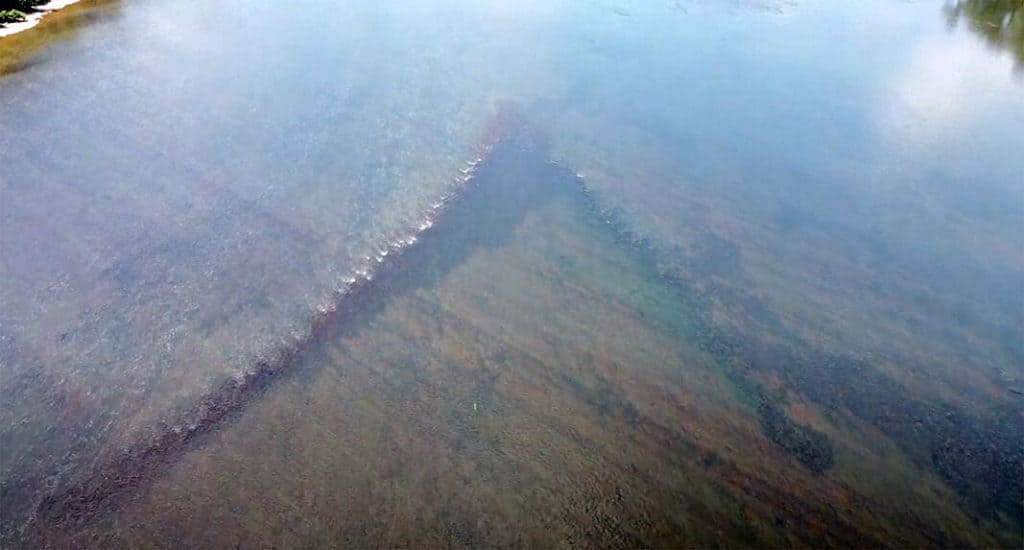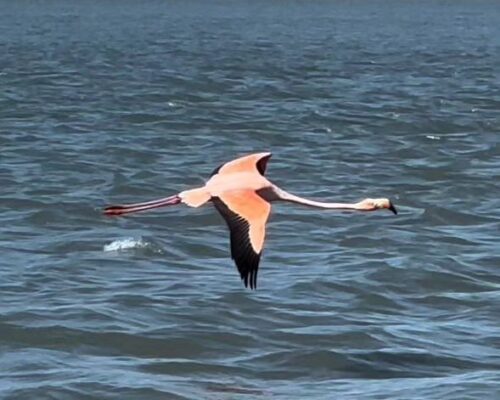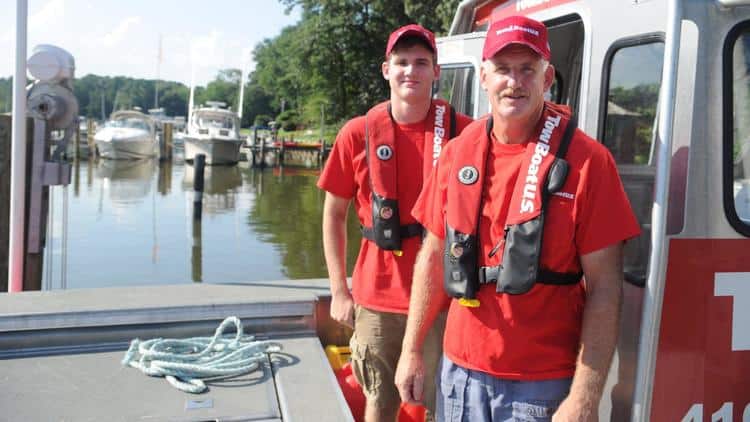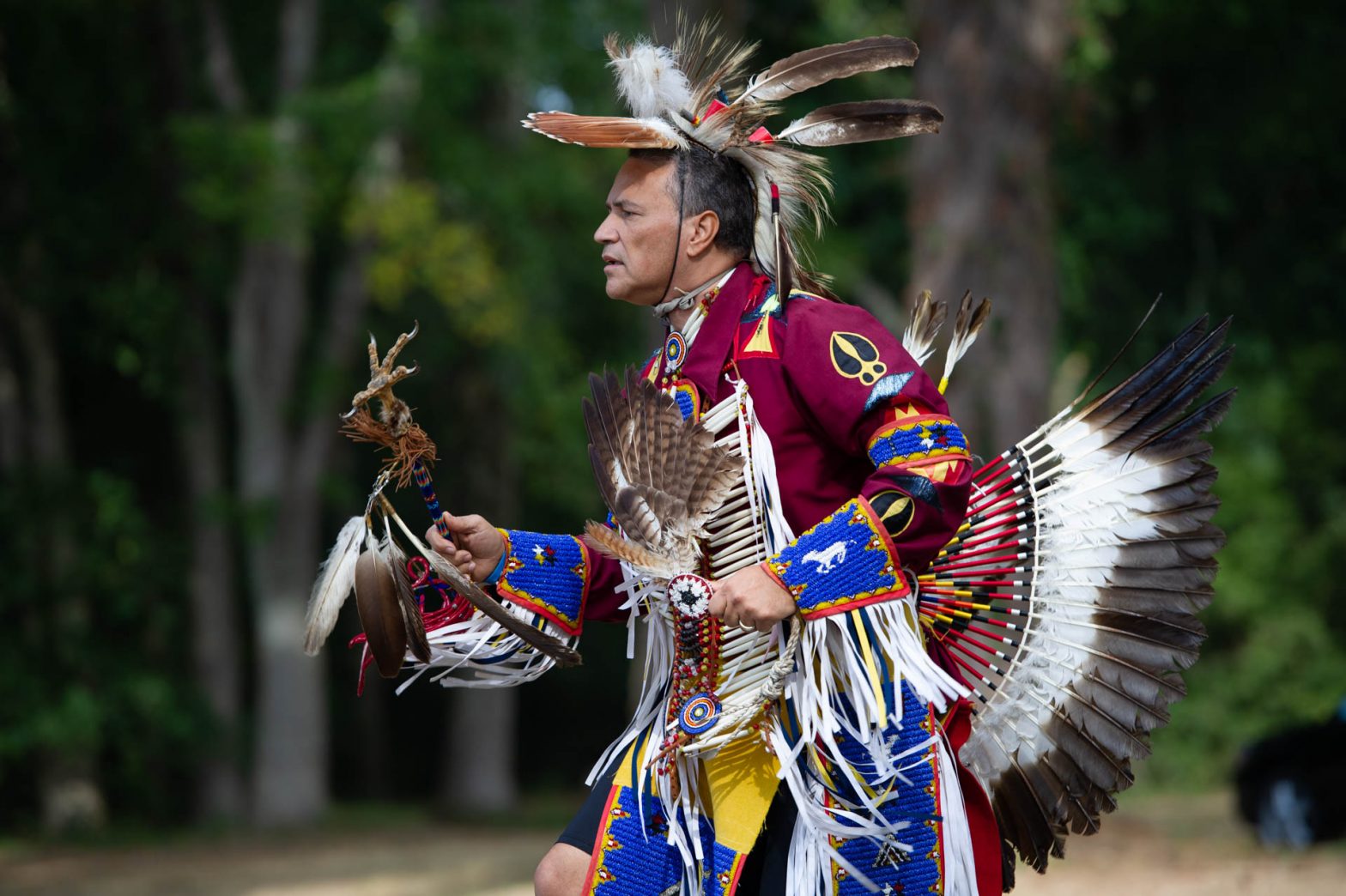By Ad Crable, Bay Journal News Service
As a kid growing up on Bald Top Mountain above the Susquehanna River in Pennsylvania, Van Wagner would look down during times of low water to see a mysterious “V” rising from the bottom, pointing downstream.
Later, he learned it was an old eel weir built from stacked river rocks, a simple but effective way to funnel and catch migrating American eels. As the eels swam downstream, the walls of the weir funneled them to a narrow point where they could be captured in traps or speared more easily.
As Wagner shows in a recent drone video, the two walls of the weir rise about 3–5 feet from the river bottom. The weir is about one-eighth of a mile wide at the top of the V.
Wagner, a high school environmental science teacher from Danville, PA, was told a story that has been handed down by generations of local residents: The weir had been built by Native Americans. Indeed, the weir is located at the mouth of Mahoning Creek, where a community of Native Americans once lived.
Wagner’s own research led him to the startling theory that not only was the weir erected by Native Americans, but that it was perhaps built well before the great pyramids of Egypt. He asserts this possibility because wood recovered from an old capture basket at the end of an eel weir in Maine was carbon-dated to an origin of approximately 6,000 years ago.
Moreover, it seems the Susquehanna is full of old eel weirs, underwater landmarks still standing after centuries, if not eons, of floods.
The historical record does not include much documentation of eel weirs in Pennsylvania. But when COVID-19 grounded field trips this year at Lewisburg Area High School, Wagner tasked his students with poring over satellite imagery of the Susquehanna to find the telltale Vs of eel weirs.
So far, they think they have found several dozen. And almost all are near documented Native American sites.
That’s no surprise to Aaron Henning, a fisheries biologist with the Susquehanna River Basin Commission. “There are hundreds out there. There’s one next to the airport in Harrisburg,” he said.
One simple reason may be that the snakelike eels were once a primary source of food for people living along the Susquehanna. “Native Americans used to smoke and dry the eel meat to be used all winter. This was likely the most important source of protein and calories for local people for several thousand years,” Wagner said.
Swatara Creek near Harrisburg draws its name from a Native American word believed to mean “where we feed on eels.” Swatara Township has an eel in its crest. The city of Shamokin, which drains into the Susquehanna, is said to mean Eel Creek in the language of the Delaware tribe.
According to the Pennsylvania Fish and Boat Commission website, “Estimates of historical abundance suggest that eels made up 25% of all fish biomass in the Susquehanna River basin.”
Weirs also have been found in Maryland, New York and Delaware.
In his master’s thesis, Prehistoric Fish Weirs in Eastern North America, Allen Lutins wrote that eels and other fish played an important role in the diets of Native Americans along rivers and the Atlantic Coast before the Woodland Period, which stretched from 500 BC to AD 1100.
The reason: Catching fish required little effort and risk. And, American eels were plentiful. Wagner marvels that Native Americans obviously knew the natural history of eels even though it takes place entirely under water. They knew to operate their weirs in the fall when adult eels migrated in mass numbers down the Susquehanna. The fish were on their way to the Sargasso Sea in the Atlantic Ocean to spawn and die, a far-off central gathering spot for American eels that was only discovered a few decades ago.
The eel is the only fish in the Susquehanna to spend its adult life in the river, then return to the sea.
Lutins, citing other scholars, said it is often difficult to distinguish between prehistoric eel weirs and those built by early colonists who copied the Native American techniques. He cited several settlers who described stone or stake weirs in Virginia’s James and Shenandoah rivers still in use at the time by Native Americans.
Newly arrived colonists took over the weirs and built new ones. Eels became a diet staple of residents around Danville into the early 1900s, when hydroelectric dams downriver began sealing off the great eel migration and disrupting the reproduction cycle.
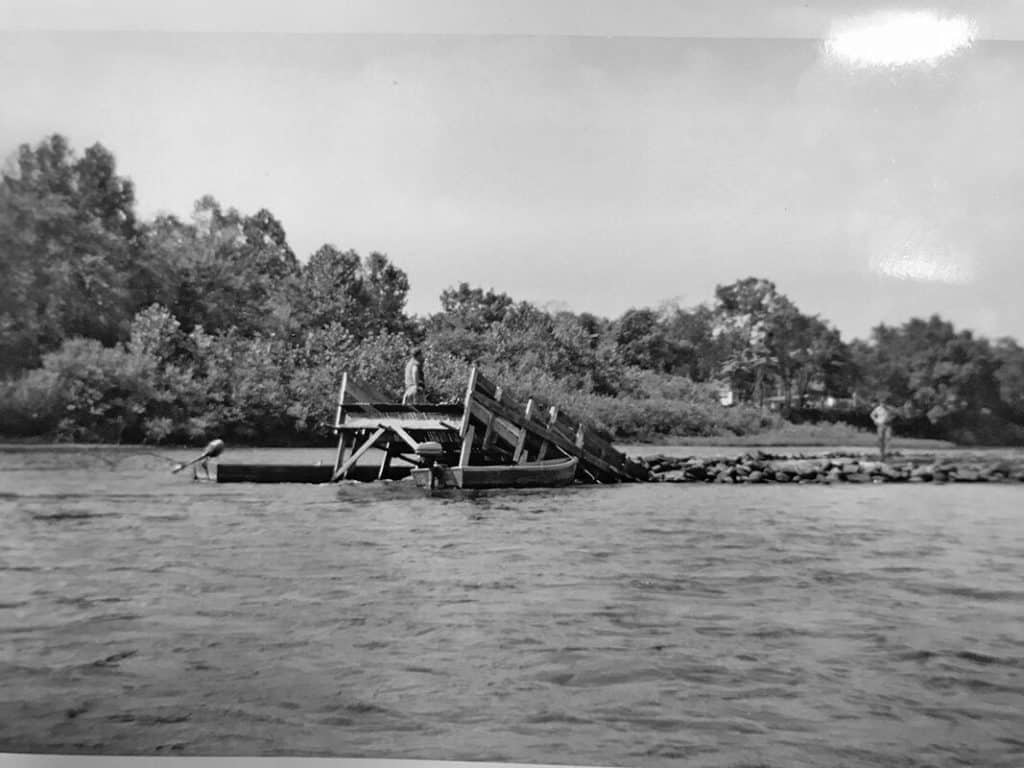
Even after a phalanx of four hydroelectric dams blocked passage, eel hauls continued in the river into the 1950s for the remaining adult eels, which can live up to 40 years and grow 5 feet long.
In recent years, the federal government and fisheries agencies from Pennsylvania, New York and Maryland have stepped up eel restoration efforts. Since 2005, more than 1.5 million young eels from the Sargasso Sea have been captured at the Conowingo Dam and trucked upriver for release.
You can read the entirety of this story at bayjournal.com.

